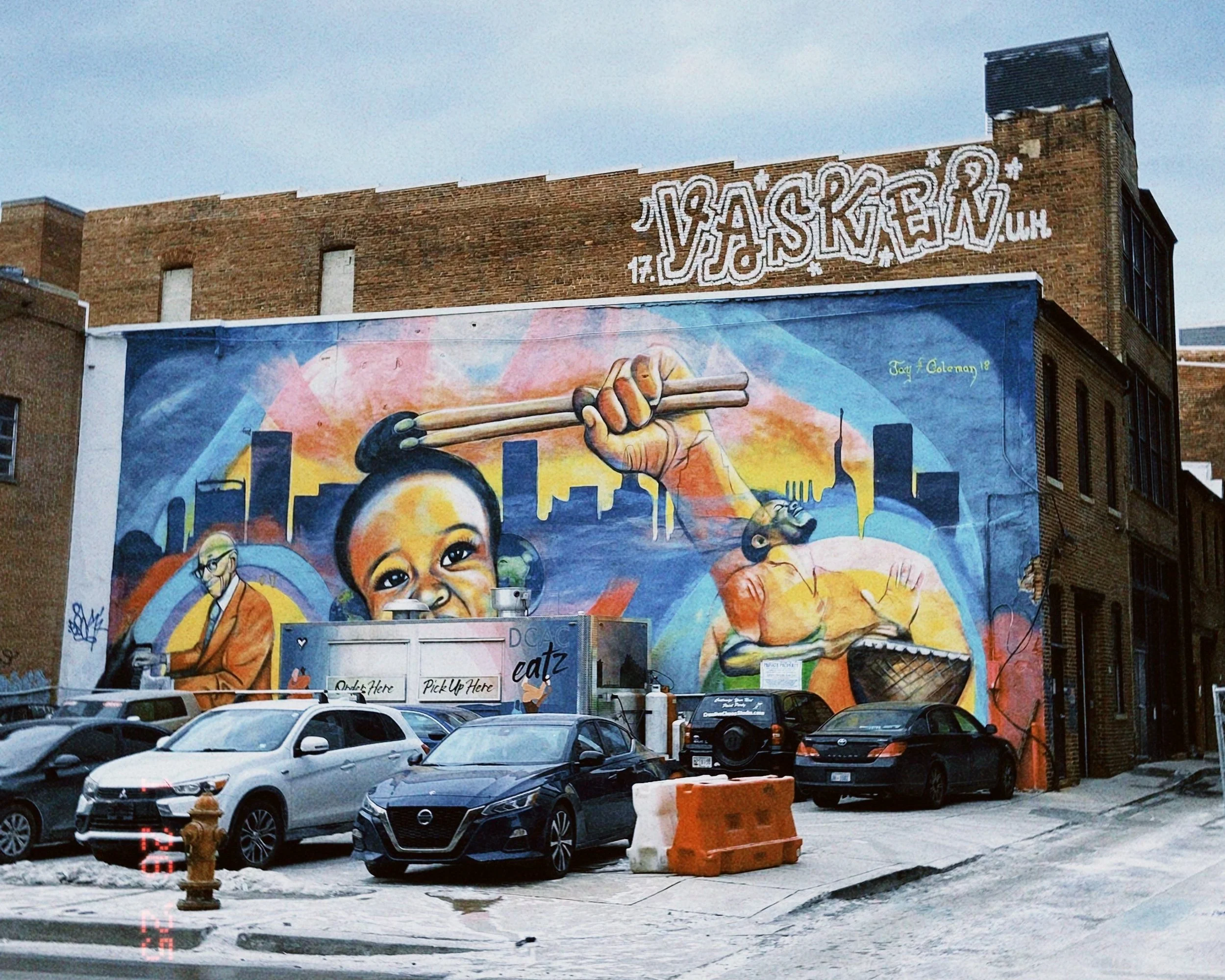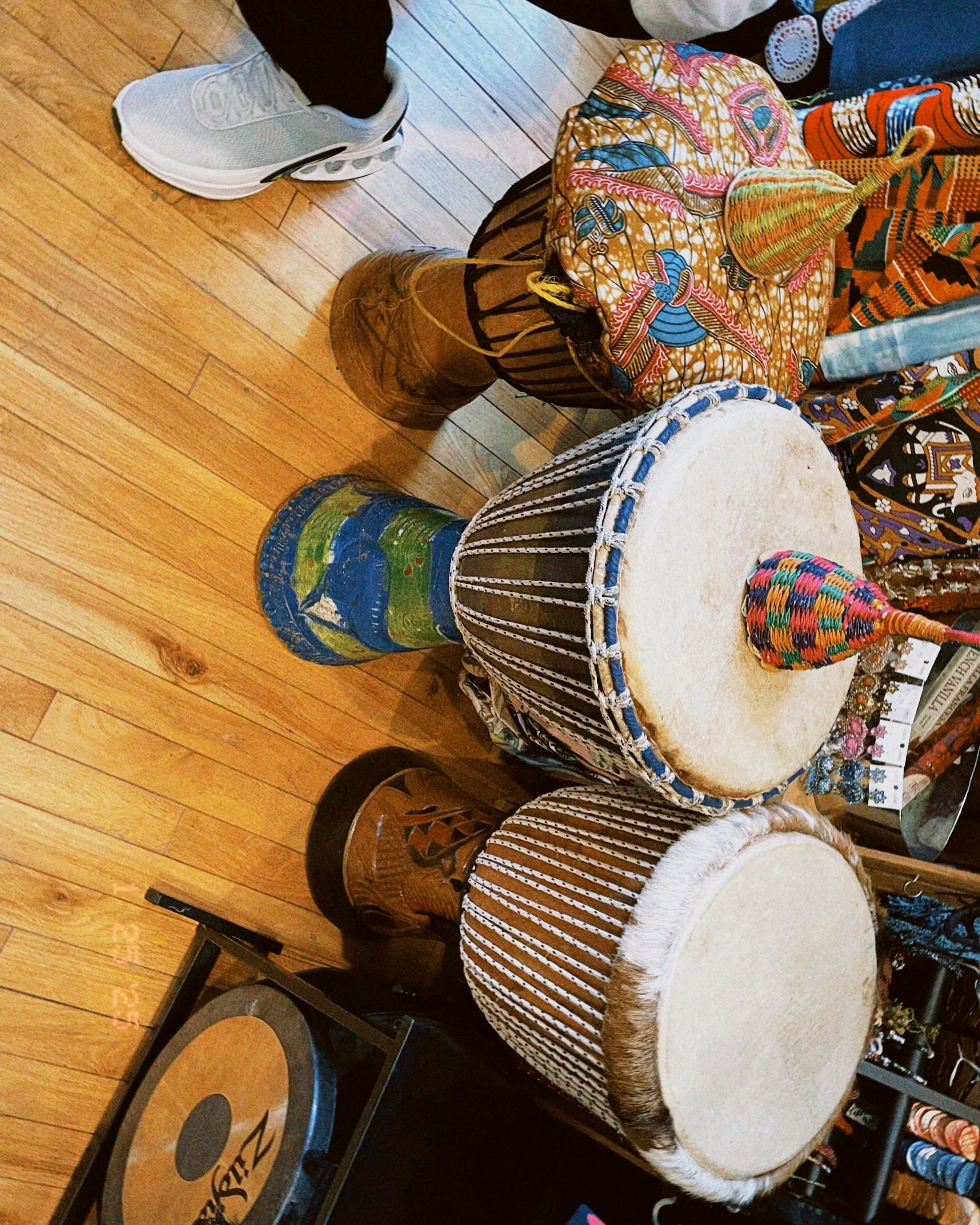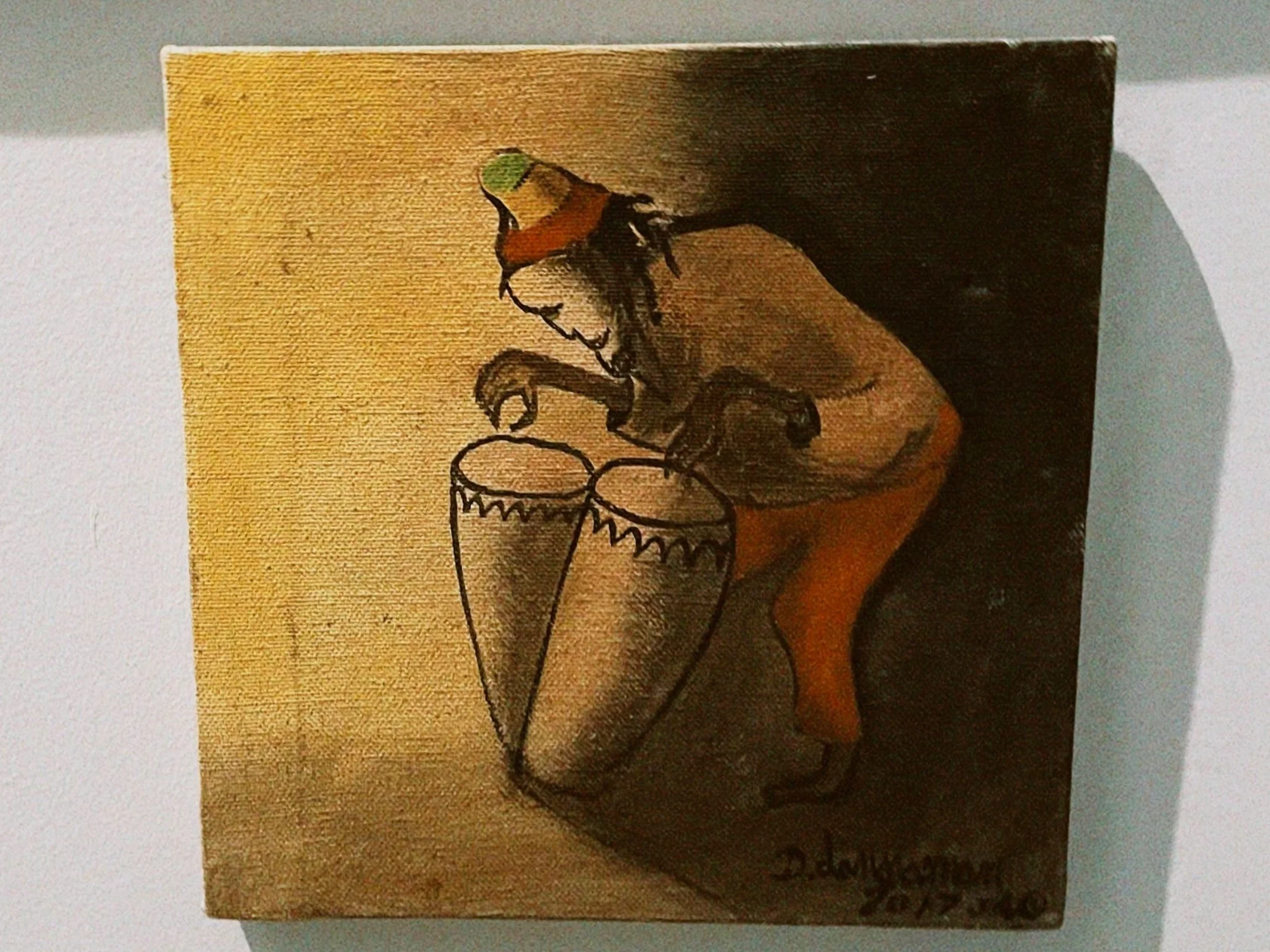Resonances of the Drum: Between Roots, Resistance, and Memories
Baltimore, 2025. Fonte: Arquivo pessoal.
The drums, as instruments of great cultural significance, play a profound historical role in resistance and communication, especially in times of repression, struggle, and celebration. In various parts of the world, such as in colonial Brazil, drums were used as a means of communication among the enslaved, enabling the organization of escapes and revolts, while also strengthening the movement of resistance against oppression. For this reason, during many periods, both in the United States and Brazil, between the 18th and 19th centuries, drums were prohibited, as they were seen as a threat to colonial and imperial authorities, who feared their power to unite and mobilize the oppressed.
Eubie Blake National Jazz and Cultural Center, 2024. Fonte: Arquivo pessoal.
The prohibition of drums, particularly in contexts of slavery, reflects not only an attempt to neutralize resistance but also a desire to suppress African and Afro-Brazilian cultures. The sound of the drum, imbued with strong symbolism, was an expression of the identity and spirituality of the subjugated peoples; thus, its repression aimed at social and cultural control. However, despite these prohibitions, the drum never ceased to be a powerful tool of resistance and a form of cultural preservation, as evidenced by the rhythms and musical styles that emerged, such as samba, candomblé, and funk.
Walking through the streets of Baltimore...
Edges of Ailey Exhibition at the Whitney Museum, 2024. Fonte: Arquivo pessoal.
Drums manifest in various forms, not only as sound instruments but also as visual and cultural symbols that mark the urban landscape. It is common to see representations of drums painted on the walls of buildings, reflecting the presence and importance of this tradition, not necessarily in the city itself, but in its diasporic roots. Moreover, drums occupy space in studios and workshops, keeping alive the connection between people and the historical and cultural roots they represent. In galleries and exhibitions, drums also appear in paintings, reinterpreted by local and immigrant artists who explore the symbolism and aesthetics of these instruments in a contemporary context.
Baltimore, 2024. Fonte: Arquivo pessoal.
These drums, both in their physical form and in artistic representations, have guided encounters and dialogues, becoming a point of convergence for people who seek to preserve and strengthen cultural traditions. Yet more than that, sometimes, without searching for them, people find the drums through ears, eyes, and bodies that need to feel their presence. In Baltimore, it has not been uncommon for the sound of the drum or its vibrant image on the city walls to become the center of new connections and moments of communal sharing. In this way, the drums continue to be a constant and guiding presence, conveying stories of resistance and identity, and creating spaces where culture and history meet and renew with every encounter.
Baltimore, 2025. Fonte: Arquivo Pessoal.
The drum, in this cycle between past, present, and future, becomes a point of connection between what we were, what we are, and what we can be. In Brazil, its relationship with the people goes beyond being a mere instrument; it is a living memory that carries the stories, struggles, and feelings of a people. Whether in samba circles, popular festivals, or cultural manifestations, the drum has always been present, marking both presence and memory.
Here in Baltimore, the experience with the drum takes on a different form, yet still retains the strength of a link to its roots. The beats continue to echo, now in another context, but with the same power to connect us to what is essential. The drum, both in Brazil and here, teaches that looking to the past is not an escape, but a way of understanding the present and what is still to come.





